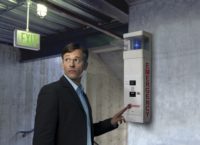Security camera systems play a significant role in supporting public safety. As a security solution, camera systems provide valuable evidence for post-crime investigations and help displace criminal activity to unmonitored areas, e.g., places where cameras are not present.
To realize the benefit of security camera systems, the cameras in a given system must be properly functioning, well-positioned and recording. The consequences of a few non-functional cameras can mean a breakdown in the security solution and lead to adverse outcomes such as uncaught criminals or property loss.
Knowing the desired end solution is critical when designing and implementing a new security system. System integrators/operators must know different factors such as scale, equipment cost, IT infrastructure needs, location-related variables and operation and maintenance costs.
Security camera systems are unique, so planning early and being as fully aware of the undertaking as possible is essential. The physical factors of installation, i.e., the equipment, operating logistics and system maintenance, are three key considerations that will help security camera and surveillance system operators achieve their desired outcome. These best practices will help ensure that the setup has little to no surprises and that the system is reliable post-installation when users need it most.
Predicting challenges through modeling and common sense
Forecasting the challenges of installing a new security camera system as early as possible is highly recommended long before starting any physical installation. Determining the necessary hardware and costs associated with the project is essential. Furthermore, the optimal positioning and capabilities of the cameras will determine where security leaders will need electrical wiring or what types of mounting devices will be best for a camera’s intended purpose.
Determining and analyzing all the factors in installing a security camera system can be overwhelming. Utilizing advanced computer modeling technology will allow users to predict and discover where challenges may arise during installation.
Specific cameras in a system will have different objectives. One may monitor a dark parking lot, while another identifies people entering and exiting a building. Modeling can help determine the best type of camera for a given objective, how to position the camera and what wiring layout is needed to place a camera in a particular position.
The key is to prepare and plan as best you can before even starting the installation process. Practice makes perfect, as the old saying goes. Regarding security camera systems, extensive preparation will make installation more manageable, and more likely, the system will produce the desired results once installed.
Understanding physical limitations
Only some security camera systems need to have hundreds of cameras with advanced features. Again, it is good to clearly understand the solution security leaders are aiming for and the optimal way to achieve it. Primary considerations should be how many and what types of cameras to use. How large is the area needing to be monitored and what capabilities will the cameras need to watch at any given moment? These considerations involve working around physical barriers such as distance to a power source, building integrity, weather, etc.
Different camera providers offer various options or limitations, so analyzing multiple providers’ equipment and selecting the best kind suited for the desired security needs is good. Some cameras provide high-resolution recording, night vision or 360-degree view. Which equipment you choose should depend on the camera’s capabilities compared to the goal of the security solution.
With the number of cameras in mind, the next hurdle becomes the infrastructure logistics of a property or building and its challenges. Electrical wiring, command center hardware and the power source are a few examples of infrastructure needs that need thorough planning.
Overcoming post-installation limiting factors
Two limiting factors that impact the efficacy of security camera systems post-installation are operation and maintenance. Operating a system differs from maintaining the cameras, but both help achieve the overarching security solution. The optimal number of people required to handle a system depends on the scale. Still, maintenance will always be needed, no matter the number of cameras, to ensure that when recordings are required, they are available and of usable quality.
These factors are limiting because, without supporting technology, the larger the security camera system becomes, the more human labor is required. Not only will system operators be spending time performing tedious maintenance that does not produce profits, but training will be a significant expense to ensure that maintenance is done correctly and by trusted employees. The ideal solution is integrating advanced technology to support maintenance operations and identify problematic cameras quickly and efficiently.
Through intelligent software, many security providers have overcome the obstacle of maintaining thousands of cameras across multiple systems. The software uses image recognition and can signal when there is a problem or malfunction with a camera. It does this nearly instantaneously and can monitor all cameras in a system 24 hours a day. The software dramatically reduces the time it takes to identify and correct problematic cameras, reducing the chances that a camera will be broken or malfunction when a crime or intrusion occurs.
The keys to security system longevity
Regarding security and surveillance systems, it is necessary to be aware of and predict any physical obstacles that could arise during installation before even starting the process. However, the most challenging problem that arises post-installation is maintenance. While all other factors can be sufficiently prepared for or forecasted using computer modeling software, maintenance is unavoidable when operating a security camera system.
Because maintenance is necessary, critical and a severe hindrance to scalability, intelligent software that can identify issues with security cameras in a fraction of the time is an essential “best practice” to ensure the longevity of a security camera system. Especially for systems comprised of dozens or hundreds of cameras, maintenance becomes the most significant hurdle to overcome, and intelligent monitoring software is the most efficient and effective means to overcome ongoing reliability issues.





